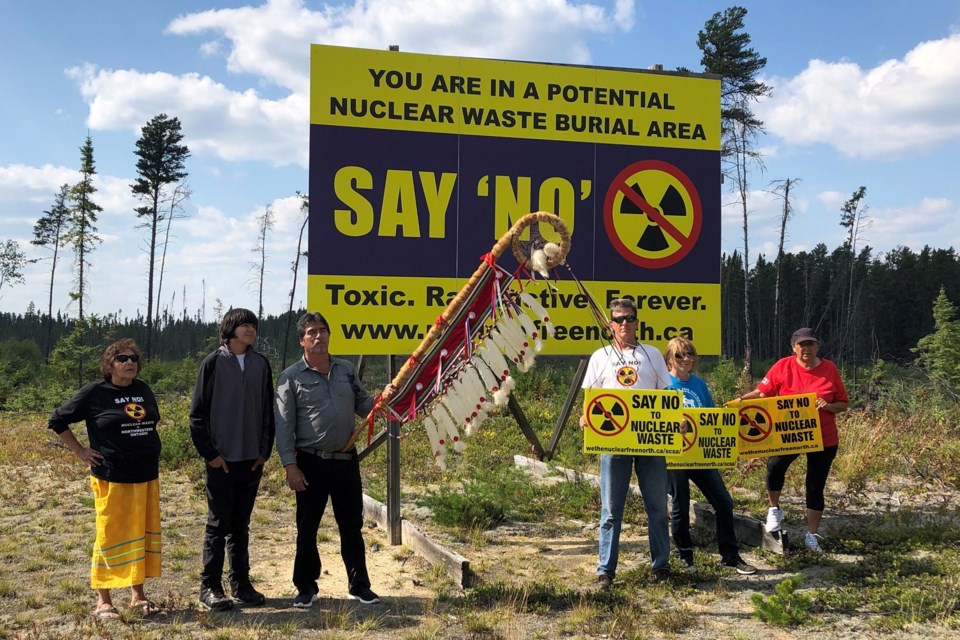IGNACE – The fifth annual Walk Against Nuclear Waste concluded on Labour Day morning with about 30 participants from points east and west converging on a patch of land south of Highway 17 between Ignace and Dryden.
Approximately 20 protesters began their walk in two groups Sunday morning, one heading east from Wabigoon and the other going west from Ignace. They were joined by about 10 more people along the way.
They walked about 20 kilometres on Sunday, were driven to overnight accommodations, and then returned to finish their walks Monday morning, participant Sheila Krahn told Newswatch.
“I was very proud of those people that did walk,” said Krahn, who trailed the group from Ignace in an RV.
“I'm physically not able to walk that distance, but there were more people over 60 there (than) under 60 and they’re all very dedicated in trying to save our future for the kids.
“It was a very busy highway, but we did it.”
Their meeting point was near a site the Nuclear Waste Management Organization is considering for construction of a deep-underground facility in which to place millions of bundles of spent fuel from Canadian nuclear power plants.
The deep geological repository, as the proposed facility is called, could be located at the Revell site west of Ignace and east of Dryden, if the NWMO chooses that spot over a location near Lake Huron in southwestern Ontario.
The federally mandated, industry-funded NWMO has said it will choose a site by the end of this year. Construction, pending regulatory approvals, could begin 10 years later.
The Revell site is at the headwaters of the Wabigoon and Turtle River watersheds, which flow into Wabigoon Lake and Rainy Lake.
Opponents have expressed concern over the hazards they say nuclear waste storage would pose to the region’s waters, wildlife and people.
The anti-nuclear event’s lead walker was Darlene Necan, an Ojibway Nation of Saugeen (Savant Lake) Elder who led all of the walk’s previous editions.
“Many people stopped and walked a short distance with us, others stopped with gifts of fruit or water, and the honking of horns in support was almost constant,” Necan said in a news release.
“The walk this year was very meaningful,” she added. “Arriving safely at the site after the long walk represents the people’s struggle with the nuclear industry, and the way we worked together and supported each other and received support from so many passersby was so encouraging.
“We prevailed, and we will prevail over this nonsense idea of burying nuclear waste in our homeland.”
Organizers said walk participants included members of several area First Nations, allies, supporters and a documentary film crew.
Ignace’s township council passed a motion in July expressing its willingness to continue as a potential host community for the deep geological repository.
Wabigoon Lake Ojibway Nation, on whose traditional territory the Revell site lies, hasn’t yet decided on the question of willingness to host the nuclear waste facility.
The NWMO has identified community willingness as a necessity for site selection.
Jake Pastore, spokesperson for Ignace, said in an email to Newswatch that the township’s councillors are “always open to hearing from any group, any voice, any citizen on this matter and respect all opinions on this subject.”
Ignace council’s decision in July followed years of community discussion and “a very strong mandate from its community,” he added.
“We are now respecting the process and journey that Wabigoon Lake Ojibway Nation is undertaking, and we eagerly await the final decision from NWMO on the selection process,” he said.
